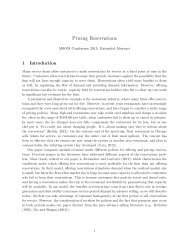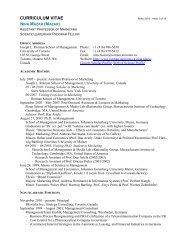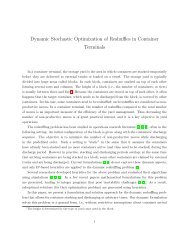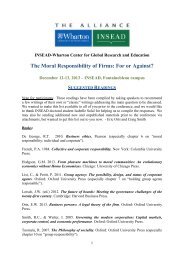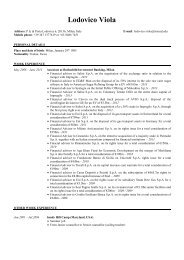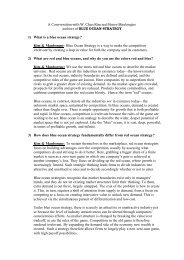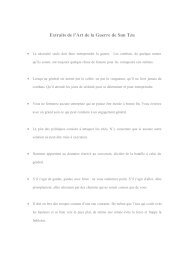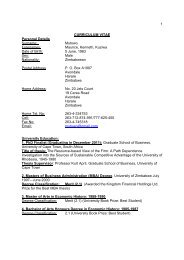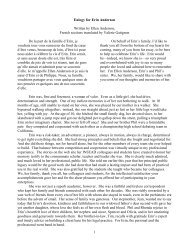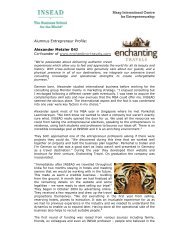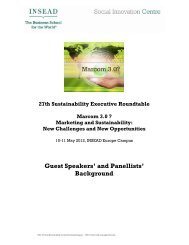RESPONSE - Insead
RESPONSE - Insead
RESPONSE - Insead
Create successful ePaper yourself
Turn your PDF publications into a flip-book with our unique Google optimized e-Paper software.
Findings: Developing Social Consciousness and SRB in Managers (Objective 4) Controlling for “Placebo”<br />
effects: comparing meditation vs. hatha yoga training<br />
Finally, the data shows that the socially responsible behaviour measured by the “lottery game”<br />
changes in the expected direction (e.g. splitting a 10,000 euros gain more in favour of the other<br />
players, particularly the one without any veto right on the proposed distribution) significantly more in<br />
the meditation group than in the hatha yoga group (97%).<br />
However, to our surprise, there are also prepost shifts in the behaviour and some its antecedents<br />
(primarily personal values) recorded by the hatha yoga group which are significantly larger than those<br />
reported by the meditation group. Here are the most important ones:<br />
– SRB: the likelihood of a “do no harm (process)” decision (outsourcing) reduces more strongly<br />
in the hatha yoga group (95% confidence level)<br />
– Motives for SRB decisions: the motive “it is morally right” increases more in the hatha yoga<br />
group (92%)<br />
– Personal values: “social justice” (95%) and “protection of the environment” (89%) increase in<br />
salience as guiding principles for managers in the hatha yoga group more so than in the<br />
meditation group.<br />
The first conclusion that one might draw from this evidence is that both forms of “nonorthodox”<br />
training interventions exhibit a significant influence on both SRB and on psychological traits that<br />
impact on SRB. This might be due to the fact that both rely on a common stressmanagement pattern<br />
which reduces the “tunnel vision” problem discussed in Chapter 7. An important implication is,<br />
therefore, to consider both interventions as effective CSR training strategies, although with some<br />
important differences in the types of impacts they have on behaviour and psychological traits. This<br />
conclusion is particularly striking in the comparison of both yoga training approaches with the<br />
standard executive education one.<br />
Overall, however, the meditationbased coaching intervention shows evidence of more significant and<br />
diverse impacts on different dimensions of SRB and of its psychological antecedents, even in<br />
comparison with the hatha yoga training group 27 . This supports our initial hypothesis about the<br />
influence of deep consciousness development processes, such as introspective and meditative<br />
techniques. The important qualification to our initial assumptions is that the other yoga training, which<br />
we thought was simply a “placebo” effect, actually shows its own potency. The data clearly suggests<br />
that the “sugar pill” does have its healing power. The implications from this body of firsttime evidence<br />
are drawn in Section 10.3 and 11.3.<br />
27 Note that many more dimensions of SRB and of psychological factors show a significant difference<br />
in favour of the yoga meditation intervention, compared to the dimensions on which hatha yoga<br />
seems to prevail<br />
<strong>RESPONSE</strong>: understanding and responding to societal demands on corporate responsibility<br />
75



